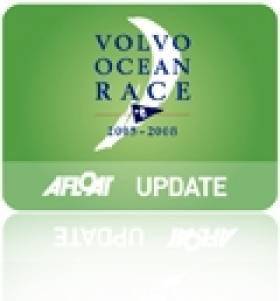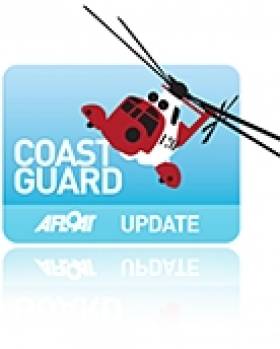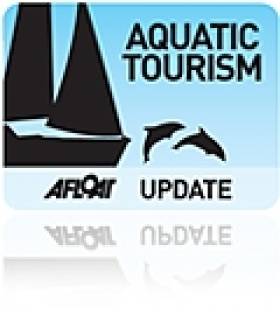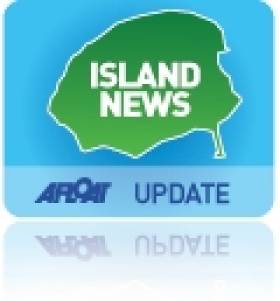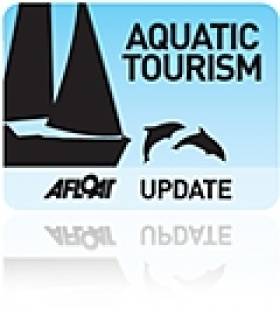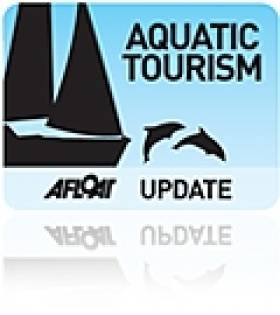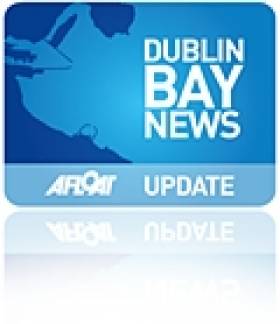Displaying items by tag: tourism
Showcase for Galway at VOR 'Irish Day' in Adu Dhabi
#VOLVO OCEAN RACE - Galway was showcased on Friday 6 January as part of special a 'Irish Day' celebration in Abu Dhabi, where the Volvo Ocean Race fleet is getting ready to embark on its next leg.
Galway Bay FM reports that the City of the Tribes was highlighted as a top international tourism destination - with the 'VOR Village' at Nimmo's Pier being a focus of discussions, according to Galway Mayor Hildegarde Naughton.
Earlier in the week saw the first sailing in Arab waters of the near-century-old Galway hooker Nora Bheag, which is in Abu Dhabi as part of a cultural exchange between these host ports of the 2011/2012 Volvo Ocean Race.
The race is set to finish in Galway on Tuesday 3 July 2012, attracting the world's media and thousands of visitors to Ireland's fifth largest city for the final prize-giving.
Eight Searches at Cliffs of Moher in 2011 for Doolin Coastguard
#COASTGUARD - The Irish Coast Guard's Doolin unit conducted eight searches for missing people at the Cliffs of Moher in 2011, according to The Irish Times.
Doolin officer Mattie Shannon told the paper that six bodies were recovered by the coastguard unit of the cliffs, which are one of the most popular tourist destinations in the country - but have also become a blackspot for suicide attempts.
The Samaritans have put up signs in the area advertising their helpline, while staff at the cliffs' visitor centre have received training for suicide intervention.
A spokesperson for The Samaritans said that the installation of a special phone with a direct line to their anonymous counselling service may also be considered.
The Irish Times has more on the story HERE.
Cork The Place to Be For a Holiday On The Sea
#TOURISM - Winter might be upon us, but it's a great time to plan a new year holiday in Ireland on the sea, according to the UK's Daily Echo.
From night-time paddling in with renowned kayaking instructor Jim Kennedy, to snorkelling in Baltimore, relaxing in Skibbereen and and fresh seafood lunches in Kinsale, a vacation in Cork can appeal to any taste.
Whale and dolphin watching is a big draw for the region, too, as Ireland's coast – the first cetacean sanctuary in Europe - plays host to a growing variety of species.
The summer feeding grounds off the southern coast are particularly busy, and tourist boats are often treated to whales breaching the surface and surrounded by dolphins putting on a show.
The Daily Echo has more on the story HERE.
New Facilities for Access to Skellig Michael Ferry
Some 10,000 people visit the Unesco world heritage site every year. But a safety audit last year was critical of facilities at Portmagee, finding there was a risk of slipping on concrete steps leading to the boats.
Minister for Transpirt Tourism and Sport Leo Varadkar has earmarked €200,000 to fund the new pontoons for tourist ferries to the island, which will be located in closer proximity to the fishing village.
The Irish Times has more on the story HERE.
Killybegs Report Shows Maritime Jobs Potential
#JOBS – 250 jobs could be created over a three year period across five key maritime areas in Killybegs according to a report launched by the Minister for Agriculture, Food and the Marine, Simon Coveney TD,
Minister Coveney set up the group on the 3rd June this year following the Economic Report for the European Commission, which assessed the status, development and potential diversification of Killybegs as a fisheries dependent community. The Group comprising of representatives from the Irish seafood sector, tourism, education, enterprise and the Department of Agriculture, Food and the Marine were tasked to identify potential jobs across key areas including seafood, ancillary services, offshore supports, tourism and marine leisure and green economy/renewable energy.
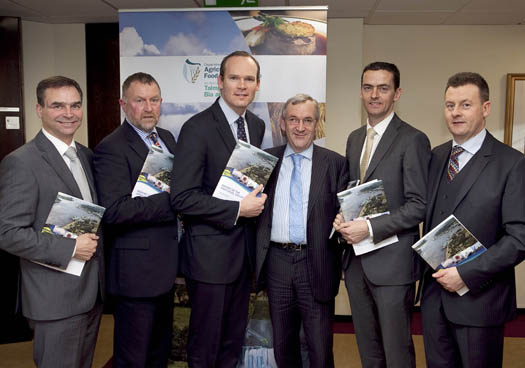
Minister for Agriculture, Food and the Marine, Simon Coveney with Sean O'Donoghue, Chairman, Chief Executive, Killybegs Fishermen's Organisation Ltd, Cecil Beamish, Assistant Secretary, Department of Agriculture, Food and the Marine, Seamus Neely, County Manager, Donegal County Council, Jason Whooley, Chief Executive, Bord Iascaigh Mhara (BIM), Paul Hannigan, President, Letterkenny Institute of Education, Jim Parkinson, Representing Offshore and Ancillary Services, Niall O'Gorman, Representing Donegal Fish Merchants Association and Conor Fahy, Regional Director, Enterprise Ireland at the launch of a report on Job Creation in the Killybegs Region.
Minister Coveney commented at the launch; "I set ambitious targets for the group and I am very pleased to see that the group has not only clearly outlined how 250 jobs can be achieved but has also identified new areas where additional jobs can be created into the future. The importance of the seafood sector to Killybegs region cannot be overstated as it is responsible for 68% of the workforce. The Group has identified that through greater diversification and adding value to our existing resources, 130 jobs will be delivered in this sector. The Group are to be commended for working together to complete this task in the allocated time and I am looking forward to seeing the actions from the report completed and the benefits that they will bring to the people of Killybegs".
The report outlines 250 jobs to be created over a three year period across five key areas. In total, 130 potential jobs were identified within the seafood sector. The expected increased access to raw materials such as blue whiting and boarfish present the most significant opportunities, along with a concerted focus on value adding opportunities. Within the ancillary services, 24 jobs were identified if collaborative opportunities between various companies can be enhanced and their abilities promoted. The offshore sector could generate 20 jobs, however competitive service provision and appropriate skill resources are deemed fundamental to achieve this. Approaching 50 jobs were identified within the tourism/marine leisure area if a co-ordinated marketing strategy is developed, whilst the green economy and renewable energy area offers the potential to create up to 40 jobs.
The Minister added "This pilot approach of co-ordinated developmentally focused activity which is concentrated on natural resources has delivered results that will drive economic development and job creation in the Killybegs region. An example of this is the partnership between BIM and LYIT to address seafood value added activities. As a direct result of this jobs initiative, the College of Catering in Killybegs will become a focus for industry activity beginning with a workshop on new product development for crab suppliers is already planned for the 30th November".
Members of the High Level Group are:
Sean O'Donoghue, Chairman, Chief Executive, Killybegs Fishermen's Organisation Ltd
Cecil Beamish, Assistant Secretary, Department of Agriculture, Food and Marine
Seamus Neely, County Manager, Donegal County Council
Jason Whooley, Chief Executive, Bord Iascaigh Mhara (BIM)
Paul Hannigan, President, Letterkenny Institute of Education
Jim Parkinson, Representing Offshore and Ancillary Services
Niall O'Gorman, Representing Donegal Fish Merchants Association
Conor Fahy, Regional Director, Enterprise Ireland
Ireland Proves Inspiring for Scottish Sail Tourism Guide
#AQUATIC TOURISM - Scotland looks to Ireland for inspiration in growing its sailing tourism industry, a new report shows.
Tourism Intelligence Scotland's comprehensive Sailing Tourism in Scotland guide outlines opportunities for businesses already involved in sailing, as well as those willing to dip a toe into an area with much potential for growth.
Among various case studies, the guide points to the Sail West initiative headed by Donegal County Council, which aims to link the coastlines of Northern Ireland, north west Ireland and Scotland and develop the tourism infrastructure between the regions.
It also notes the initiative's MalinWaters brand, which aims to support tourism businesses with information on the latest products and services, and provide opportunities to share knowledge and best practices.
The Sailing Tourism in Scotland guide is available as a PDF to read or download HERE.
Fáilte Ireland Highlights 'Huge Potential' of Marine Tourism
#AQUATIC TOURISM - Water-based activities from kayaking to surfing to diving have a "huge potential" for Irish tourism.
That was the message from Fáilte Ireland's Outdoor Adventure and Activity Forum in Westport, Co Mayo this week, The Irish Times reports.
Figures announced at the forum showed that angling tourism accounted for €58 million in revenue, while surfing attracted 52,000 visitors - a low number considering Ireland's growing reputation in the sport.
Fáilte Ireland's Brian Maher said that the agency is working on a new strategy for aquatic tourism to take advantage of Ireland's potential in the area, aiming to develop activities from angling to cruising and sailing to surfing.
“One of Ireland’s great strengths has been in angling," he said. "There is still tremendous potential there for that core group of anglers.
"It is incumbent on us to develop this and other water-based activities properly because there is so much potential there.”
Ex Sailing Chief Lashes 'Grandiose' Dun Laoghaire Harbour Plan
A former Irish Sailing Chief has added his voice to the growing concerns of sailors in Dun Laoghaire to a recently published Harbour Masterplan that Waterfront Yacht Clubs say threatens sailing in the port, Ireland's biggest sailing centre.
The plans, along with the loss of the winter ferry service from the port were featured on RTE News this week.
The Harbour company, who published the designs last month, say the masterplan can create 'a thousand jobs' but a former Irish Sailing Association (ISA) President, Roger Bannon has blasted both the plan and a supporting promotional video (below) as 'grandiose nonsense'.
"The Masterplan will position Dun Laoghaire Harbour as a marine, leisure and tourism destination of international calibre", says Gerry Dunne, Chief Executive Officer, Dun Laoghaire Harbour Company.
"We need to spend an average of €5m a year on maintaining and developing the Harbour infrastructure. The Masterplan will involve investment of more than €230m, over the next 10-15 years and will result in 1000 sustainable jobs in areas such as tourism, marine service companies, select retail, and food and beverage." says the CEO.
But Bannon, a Dun Laoghaire sailing champion, says a plan is needed but the focus instead should be on something a lot more realistic.
"Sure we want a development plan for Dun laoghaire and its Harbour but let's look at something realistic and practical over a 10 year period which we know will work and stay away from this impossible grandiose nonsense.
Mr Leo Varadkar, T.D., Minister for Transport, Tourism and Sport visited the Harbour Board in June to view the Masterplan model and the plans.
During the visit the Minister said he was aware of the very keen local interest in the future development of the harbour. The yacht clubs, who occupy 50% of the harbour waterfront, say the future of the harbour is in marine lesiure.
Bannon's full comments are below:
"What a load of aspirational twaddle. High on sweeping statements and low on specifics. Sounds more like a plan to occupy people in highly paid jobs while nothing will ever happen.
Sure we want a development plan for Dun laoghaire and its Harbour but let's look at something realistic and practical over a 10 year period which we know will work and stay away from this impossible grandiose nonsense.
There are plenty of examples of cost effective developments in many cities around the world, such as Vancouver and Boston, where marine facilities and other resources similar to Dun laogahire have been brilliantly exploited for the general benefit of everyone.
Heaven forbid that our public servants might learn something from others facing the same dilemma elsewhere in the world. Should someone tell the Harbour Board that counting on residential development to generate funding may not work?
Finally, I do not understand how the Harbour Board can take it upon itself to come up with such a plan without integration with local planning for the whole of Dun Laoghaire. Was the video made by DreamWorks?"
Galway In Talks to Attract Cruise Liners
World tourism bosses and cruise line operators will be headed to Galway next month for high-powered talks aimed at transforming the city into a global destination port.
The Connacht Sentinel reports that execuives from Fáilte Ireland, the Galway Harbour Company and Galway Chamber of Commerce will meet a delegation that will include Jamaica's head of tourism and some of the world's largest cruise line operators to discuss attracting business to the redeveloped port.
As previously reported on Afloat.ie, the proposed €200 million redevelopment of Galway Harbour - which will increase berthing space to accommodate cruise ships - has received approval to submit a planning application to An Bord Pleanála.
Galway West Deputy Brian Walsh, who helped push forward the development plan and will also meet the delegation at the end of September, said that the Galway Harbour Company has set a target of 50 cruise ships a year - which could bring in an extra €40 million annually to the local economy.
The Connacht Sentinel has more on the story HERE.
Blue Lobster a Big Surprise for Clare Couple
A rare blue lobster has become and unlikely tourist attraction in Co Clare, The Irish Times reports.
The lobster - its blue hue believed to be caused by a genetic trait similar to albinism in humans - avoided the cooking pot and now takes pride of place at Martina Sweeney's seafood shop in New Quay.
Her fisherman husband Gerry, who caught the crustacean, said: "I’ve been fishing for 30 years and have never seen anything like this."
It's believed that only one in three million lobsters is blue. Due to their bright colouring they are often prey for other sea creatures.


























